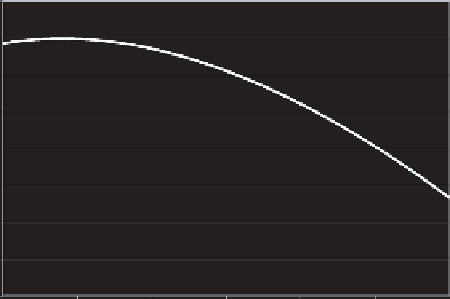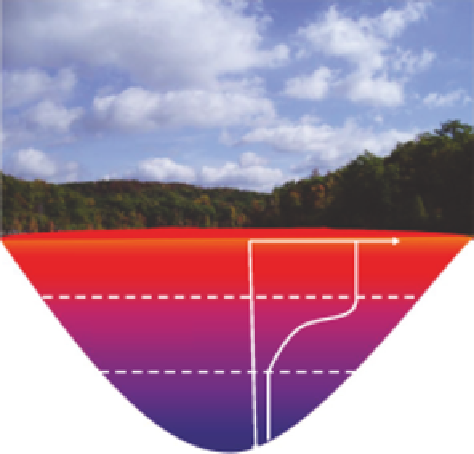Environmental Engineering Reference
In-Depth Information
1001.0
1000.0
999.0
998.0
997.0
996.0
995.0
994.0
993.0
0
5
10
15
Te mperature (°C)
20
25
30
FIGURE 12.12
Water density variations with temperature.
the available energy for mixing, such as from wind, and vertical variations in density. These density
differences result in the vertical stratiication of water. The density differences provide a barrier
that resists mixing, thus the greater the density differences the more dificult it is to mix the strata.
In freshwater the density differences are primarily impacted by the water temperatures (see
Figure 12.20). In saline lakes, differences in both the temperature and dissolved solids cause stratii-
cation. Density differences can also result from differences in the concentration of suspended solids.
An idealized stratiication cycle begins when heat enters the water surface faster than it is mixed
over the depth, usually beginning in spring or early summer. As the surface layer heats, it becomes
less dense than the waters below it. As the surface layer continues to heat, the density difference
becomes greater, forming a barrier that further inhibits vertical mixing. Wind mixing is usually suf-
icient to mix the upper portion of the water column, forming an upper, warm, and well-mixed layer,
the
epilimnion
(Figure 12.13). This layer overlays a deeper, colder, and denser layer, the
hypolim-
nion
. These two layers are separated by a zone of transition, the
metalimnion
. In the metalimnion
Temperature
Epilimnion
Metalimnion
Hypolimnion
FIGURE 12.13
Idealized summer stratiication.


Search WWH ::

Custom Search